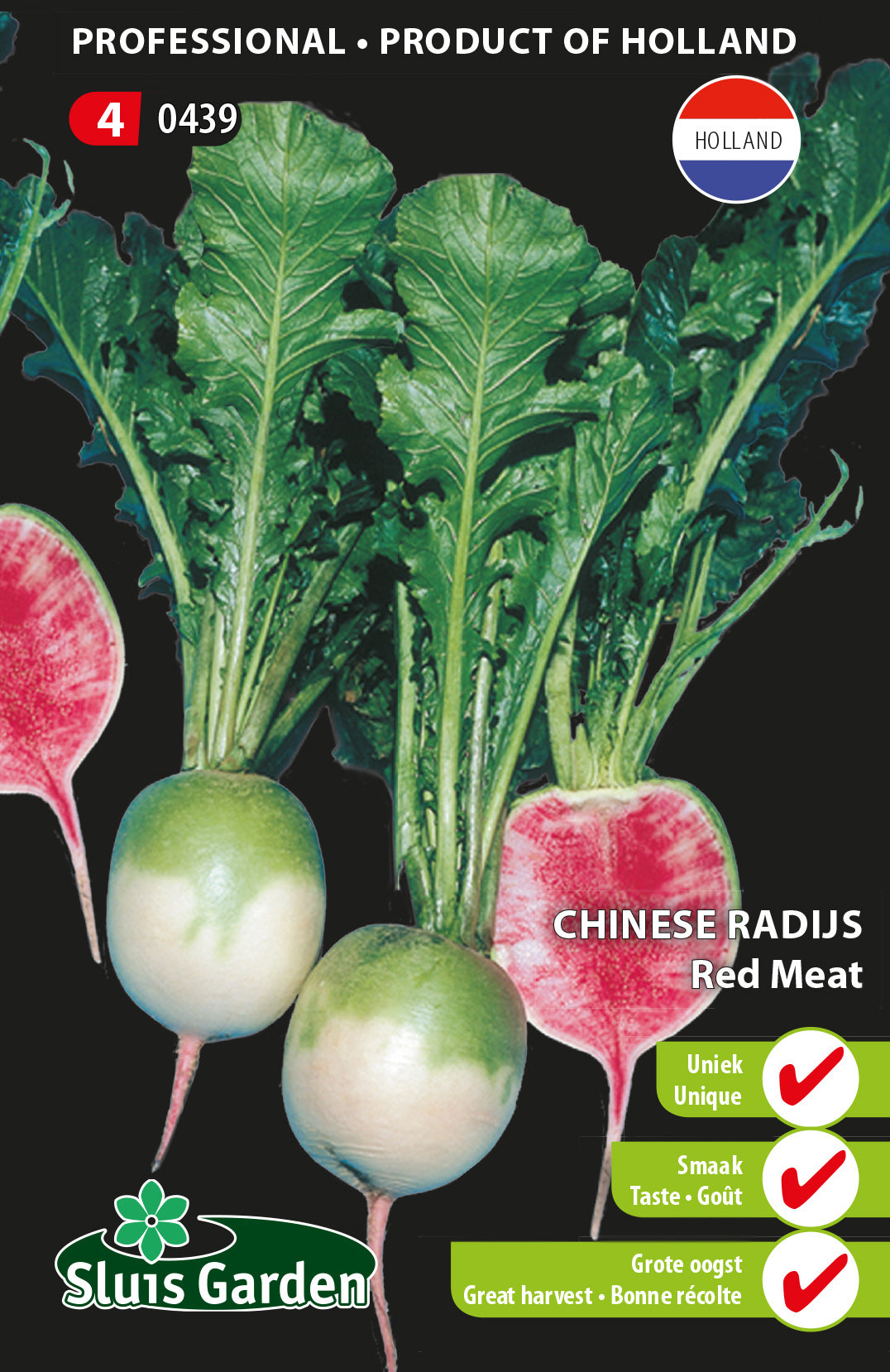1
/
of
1
Radish Red Meat
Radish Red Meat
Regular price
1.550 KWD
Regular price
Sale price
1.550 KWD
Unit price
/
per
Shipping calculated at checkout.
Couldn't load pickup availability
Radish 'Red Meat,' also known as Watermelon Radish, is a unique variety with a striking appearance. Here's a general guide on how to grow Radish 'Red Meat':
**1. Planting Time:**
- Radishes are a cool-season crop. 'Red Meat' radishes can be grown in both the spring and fall. For a continuous harvest, consider succession planting every 2-3 weeks.
**2. Soil Preparation:**
- Choose well-draining soil rich in organic matter. Radishes prefer loose, sandy soil. Ensure the soil is free from rocks and clumps to allow the roots to develop properly.
**3. Sowing Seeds:**
- Sow radish seeds directly into the garden bed. Plant the seeds about half an inch deep and one inch apart in rows. Space rows about 6-12 inches apart.
**4. Sunlight:**
- Radishes prefer full sun but can tolerate partial shade.
**5. Watering:**
- Keep the soil consistently moist. Water regularly to ensure the soil stays evenly moist, but be cautious not to overwater, as this can lead to issues like root rot.
**6. Thinning:**
- Once the radish seedlings have emerged, thin them to ensure proper spacing. This helps prevent overcrowding and allows the radishes to develop well-formed roots.
**7. Fertilizing:**
- Radishes are not heavy feeders. If your soil is well-amended, you may not need much additional fertilizer. A balanced, all-purpose fertilizer can be applied at planting time.
**8. Harvesting:**
- 'Red Meat' radishes are typically ready to harvest in about 55-70 days. Harvest them when they reach a suitable size, usually around 2-4 inches in diameter. The skin should have a greenish exterior with a vibrant pink interior, resembling a watermelon.
**9. Succession Planting:**
- Consider planting 'Red Meat' radishes in succession every 2-3 weeks for a continuous harvest.
**10. Companion Planting:**
- Radishes can be used as companion plants to deter certain pests. They are often planted with other vegetables like carrots.
**11. Pest and Disease Management:**
- Radishes are generally less susceptible to pests and diseases. However, keep an eye out for common issues such as flea beetles. Insecticidal soap or neem oil can be used if needed.
**12. Storage:**
- Radishes are best when eaten fresh. However, if you have a surplus, they can be stored in the refrigerator for a short period.
Adjust care based on your specific growing conditions and local climate. Always refer to the specific guidelines on the seed packet for 'Red Meat' radishes, as there may be unique considerations for this particular cultivar.
**1. Planting Time:**
- Radishes are a cool-season crop. 'Red Meat' radishes can be grown in both the spring and fall. For a continuous harvest, consider succession planting every 2-3 weeks.
**2. Soil Preparation:**
- Choose well-draining soil rich in organic matter. Radishes prefer loose, sandy soil. Ensure the soil is free from rocks and clumps to allow the roots to develop properly.
**3. Sowing Seeds:**
- Sow radish seeds directly into the garden bed. Plant the seeds about half an inch deep and one inch apart in rows. Space rows about 6-12 inches apart.
**4. Sunlight:**
- Radishes prefer full sun but can tolerate partial shade.
**5. Watering:**
- Keep the soil consistently moist. Water regularly to ensure the soil stays evenly moist, but be cautious not to overwater, as this can lead to issues like root rot.
**6. Thinning:**
- Once the radish seedlings have emerged, thin them to ensure proper spacing. This helps prevent overcrowding and allows the radishes to develop well-formed roots.
**7. Fertilizing:**
- Radishes are not heavy feeders. If your soil is well-amended, you may not need much additional fertilizer. A balanced, all-purpose fertilizer can be applied at planting time.
**8. Harvesting:**
- 'Red Meat' radishes are typically ready to harvest in about 55-70 days. Harvest them when they reach a suitable size, usually around 2-4 inches in diameter. The skin should have a greenish exterior with a vibrant pink interior, resembling a watermelon.
**9. Succession Planting:**
- Consider planting 'Red Meat' radishes in succession every 2-3 weeks for a continuous harvest.
**10. Companion Planting:**
- Radishes can be used as companion plants to deter certain pests. They are often planted with other vegetables like carrots.
**11. Pest and Disease Management:**
- Radishes are generally less susceptible to pests and diseases. However, keep an eye out for common issues such as flea beetles. Insecticidal soap or neem oil can be used if needed.
**12. Storage:**
- Radishes are best when eaten fresh. However, if you have a surplus, they can be stored in the refrigerator for a short period.
Adjust care based on your specific growing conditions and local climate. Always refer to the specific guidelines on the seed packet for 'Red Meat' radishes, as there may be unique considerations for this particular cultivar.
Share

